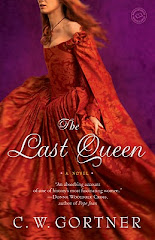 and reviewed, this is a haunting, elegant novel about how the ghosts of our unresolved past return to us, as told through the eyes of an old, ailing man who suddenly re-visits his World War I experiences as a gendarme, escorting Armenian women and children from war-torn Turkey. Among the refugees is a young woman whose mismatched gaze captivates him but they are separated by the conflict; decades later, he finds himself embarking on a journey of forgiveness. Now available in paperback, this is a remarkable and unforgettable novel. Please join me in welcoming Mark Mustian.
and reviewed, this is a haunting, elegant novel about how the ghosts of our unresolved past return to us, as told through the eyes of an old, ailing man who suddenly re-visits his World War I experiences as a gendarme, escorting Armenian women and children from war-torn Turkey. Among the refugees is a young woman whose mismatched gaze captivates him but they are separated by the conflict; decades later, he finds himself embarking on a journey of forgiveness. Now available in paperback, this is a remarkable and unforgettable novel. Please join me in welcoming Mark Mustian. Guest post by Mark Mustian:

I’ve never met anyone with mismatched eyes. I mean, I know they exist, and I’ve seen pictures and heard tell of them, but I haven’t met them. And yet the woman at the center of my novel The Gendarme, and whose picture adorns the cover, has one eye darker, the other lighter. At book signings and book club events and even by e-mail, people ask me, “Why did you do this?” And I reply, in typical author fashion, that they’ll have to read the book.
Actually, there are several reasons. The Gendarme is the story of 92 year-old Emmett Conn (then Ahmet Khan), who fought for the Turks in World War I, was injured during the war and lost much of his memory, and only later in life, and after emigrating to the U.S., begins to recall things from the beginning of the war, including his serving as a gendarme and escorting Armenian women and children out of Turkey into Syria. Among his charges is a young woman, hidden under cap and billowy clothing, whose beauty astonishes him when he sets sight upon her. She is young, maybe early teens. She has mismatched eyes.
Most Americans, I’ve discovered, know very little about the Turks and Armenians. The Armenians were a large Christian sect living in eastern Turkey, Iran and the areas near the Black Sea, descendants of an earlier Armenian kingdom, and one of the oldest of Christian peoples. There is an Armenian quarter in Jerusalem, an Armenian Orthodox Church. A small country of Armenia exists today, sandwiched between Turkey and some of the other former Soviet states in the Caucasus. At the beginning of World War I, the Turks were at war with, among others, the (Christian) Russians. Fearing collusion among their large Armenian minority, they rounded up and killed most of the Armenian men, and sent the women and children and old people on an overland trek across the desert to Syria.
When I first started researching the book, I found myself trying to understand how this could have happened. What were the Turks thinking? What circumstances led to this horror? I decided to try and write the book from the point of view of a Turk—a gendarme—escorting these people away from their homeland. In my novel Ahmet first views these deportees as having sewn the seeds of their fate, what with their clannishness and divided loyalty, but as the march goes on, and after he meets the young woman, Araxie, he begins to view the group with greater compassion, to actually see them as displaced, suffering, sympathetic people.
The mismatched eyes are part of the exotica that attracts him to her, but they also reflect the duality lying at the book’s heart—the capacity of everyone to do good and evil. As one character says at the end, there is no blood test that defines us as either bad or good, saint or sinner, Turk or Armenian. The other side of love is hate, and what greater hate is there than apathy? Turkey today, one of the most modern countries in the Middle East, denies responsibility for what happened, turning a blind eye (if you will) to the past. One can only hope that one day things will be different, that wrongs will be righted or, at the very least, acknowledged. A difference as great as, say, light eyes and dark, and all of the combinations that can be evidenced in between.












No comments:
Post a Comment